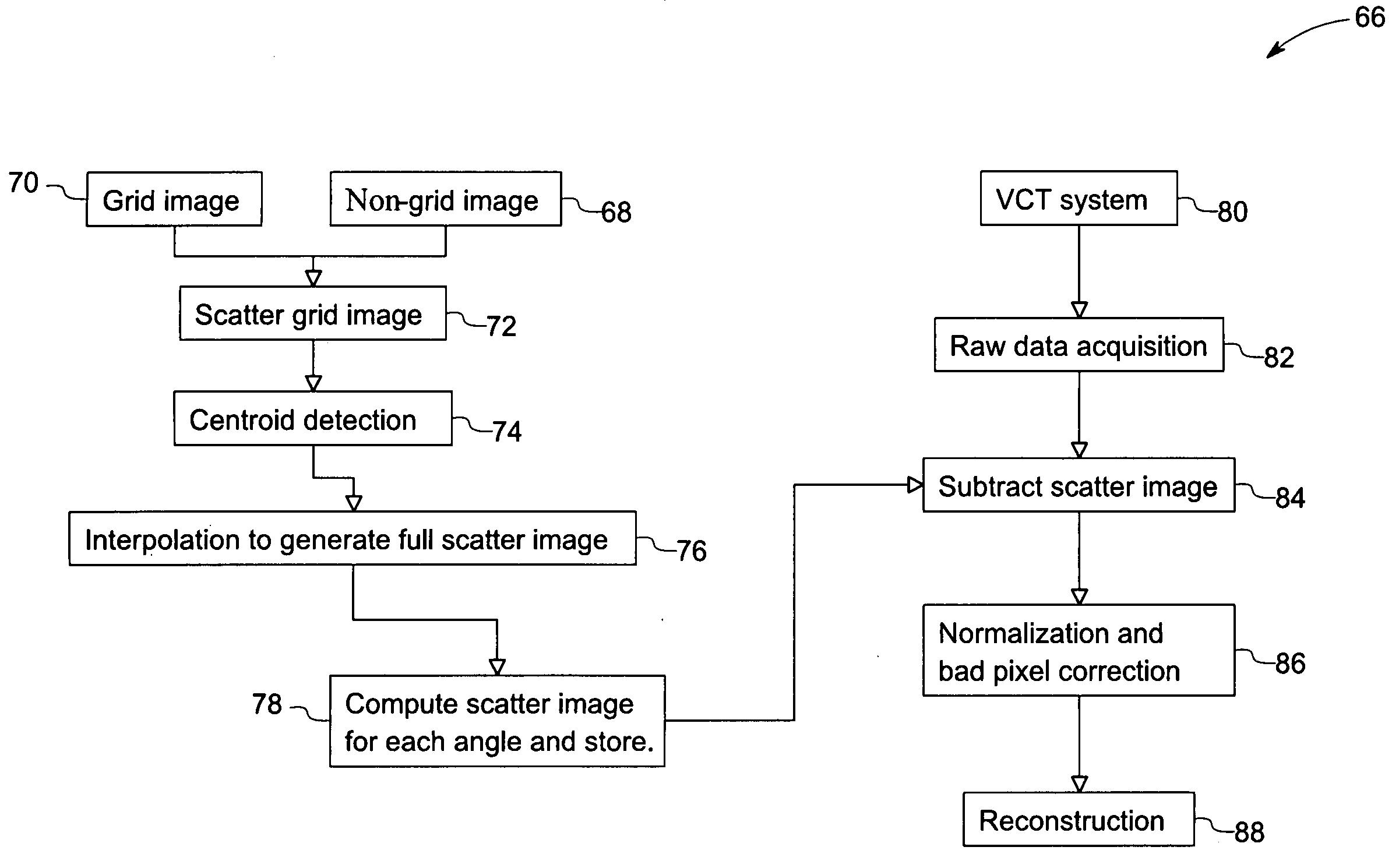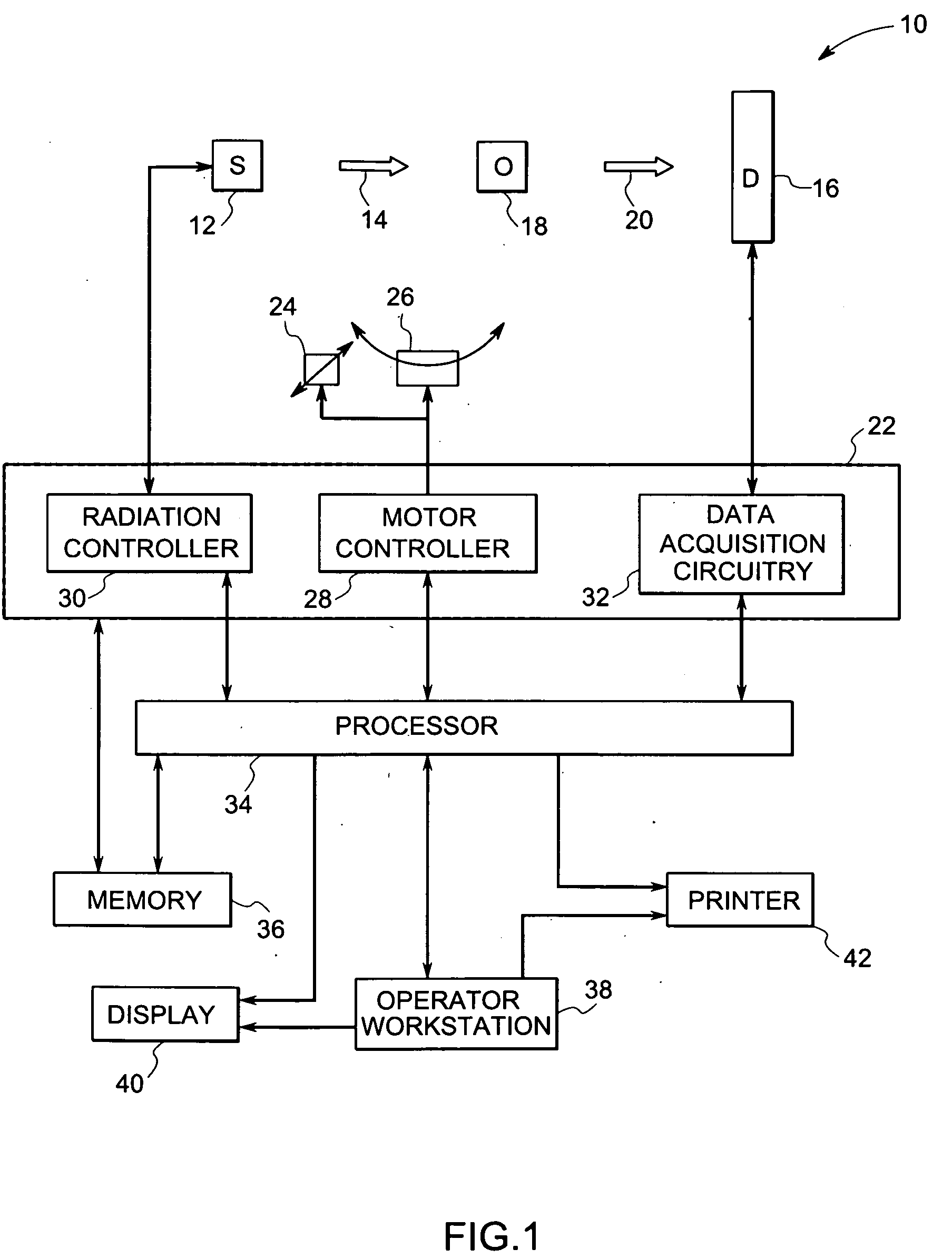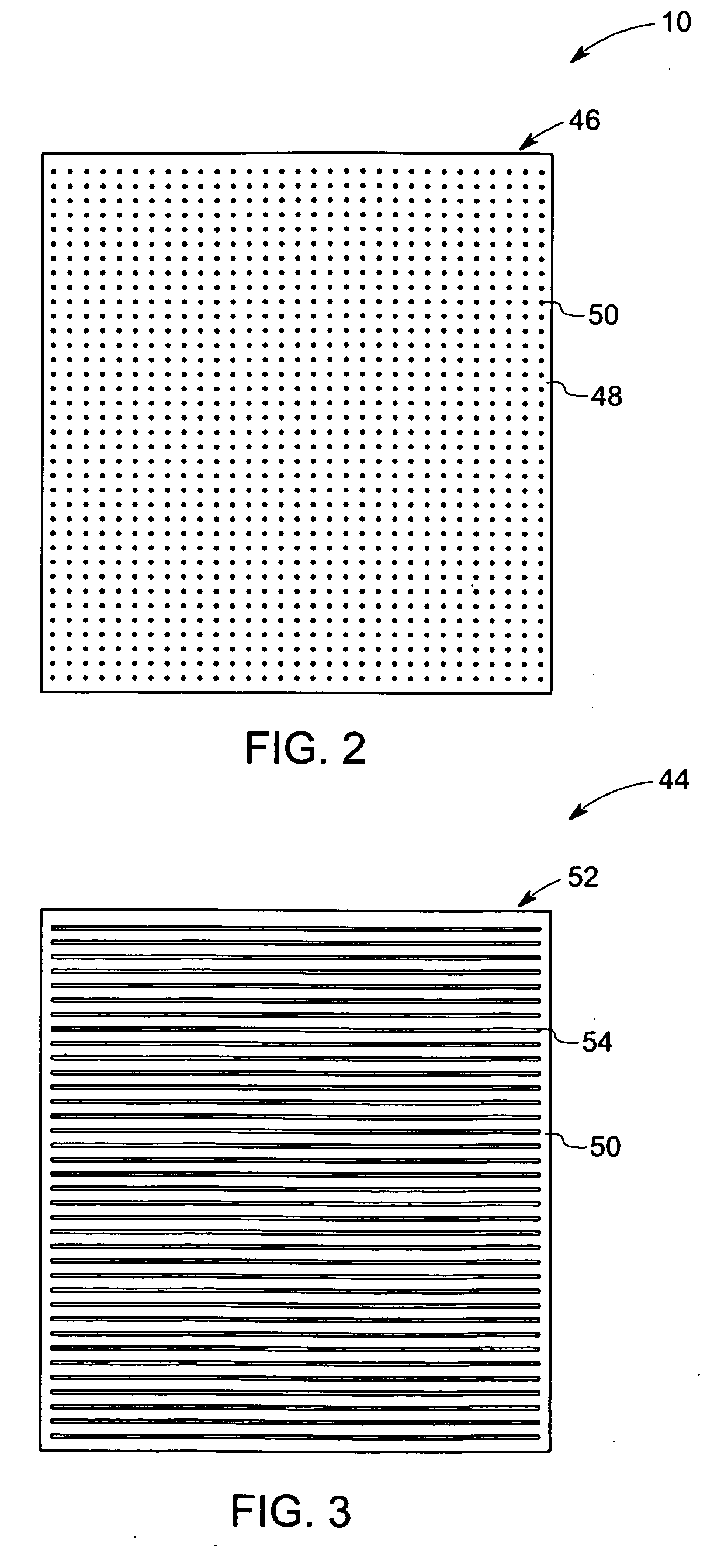Imaging system and method with scatter correction
a scatter correction and imaging system technology, applied in the field of non-invasive imaging, can solve the problems of not being able to measure internal features, ct based techniques may also have limitations, and deter their widespread us
- Summary
- Abstract
- Description
- Claims
- Application Information
AI Technical Summary
Benefits of technology
Problems solved by technology
Method used
Image
Examples
Embodiment Construction
[0017]The present techniques are generally directed to computed tomography (CT) imaging resulting in improved image quality. Such imaging techniques may be useful in a variety of imaging contexts, such as medical imaging, industrial metrology and inspection, security screening, baggage or package inspection, and so forth. Moreover, such imaging techniques may be employed in a variety of imaging systems, such as CT systems, tomosynthesis systems, X-ray imaging systems, and so forth. Though the present discussion provides examples in an industrial inspection context with respect to CT systems resulting in improved measurement and inspection accuracy, one of ordinary skill in the art will readily apprehend that the application of these techniques in other contexts and in other systems is well within the scope of the present techniques.
[0018]Referring now to FIG. 1, an imaging system 10 for use in accordance with the present technique is illustrated. In the illustrated embodiment, the i...
PUM
 Login to View More
Login to View More Abstract
Description
Claims
Application Information
 Login to View More
Login to View More - R&D
- Intellectual Property
- Life Sciences
- Materials
- Tech Scout
- Unparalleled Data Quality
- Higher Quality Content
- 60% Fewer Hallucinations
Browse by: Latest US Patents, China's latest patents, Technical Efficacy Thesaurus, Application Domain, Technology Topic, Popular Technical Reports.
© 2025 PatSnap. All rights reserved.Legal|Privacy policy|Modern Slavery Act Transparency Statement|Sitemap|About US| Contact US: help@patsnap.com



